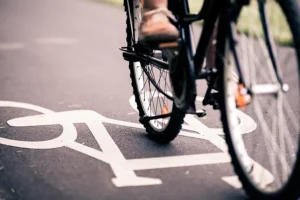How Florida Law Protects Cyclists and Pedestrians on the Road

Florida’s warm weather and scenic routes make it an ideal place for walking and cycling. In cities like Stuart, it’s common to see residents using bikes to commute or pedestrians enjoying the waterfront and local neighborhoods. Unfortunately, Florida also ranks among the states with the highest number of pedestrian and cyclist accidents each year. Because of this, Florida law includes several protections designed to keep vulnerable road users safe and hold negligent drivers accountable.
Understanding these laws can help both cyclists and pedestrians make safer decisions and ensure they know their rights if they are ever involved in an accident.
The Growing Need for Road Safety Awareness in Florida
As communities like Stuart continue to expand, more vehicles share the road with walkers, joggers, and cyclists. While most drivers act responsibly, accidents still happen when motorists are distracted, impatient, or unaware of the rules. Even a brief lapse in attention can lead to serious injuries or fatalities for those outside of a vehicle.
Cyclists and pedestrians are especially vulnerable because they lack the physical protection that cars provide. Florida’s lawmakers recognize this imbalance, which is why the state has established specific laws that define how drivers, cyclists, and pedestrians must behave on public roads.
Legal Rights of Cyclists Under Florida Law
In Florida, bicycles are treated as vehicles. This means cyclists have the same rights and responsibilities as drivers when traveling on public roads. They must obey traffic signals, stop signs, and lane markings, just like any motorist. However, there are also special rules that apply to cyclists to ensure their safety and to help prevent confusion among drivers.
- Use of Lanes: Cyclists must generally ride as close to the right-hand side of the road as practicable. However, they are allowed to move into the center of a lane when avoiding obstacles, passing another vehicle, or preparing for a left turn.
- Bike Lanes: When bike lanes are available, cyclists should use them. Drivers are prohibited from driving or parking in these lanes, except when turning or entering a driveway.
- Lighting and Visibility: Between sunset and sunrise, cyclists must use a white front light visible from at least 500 feet and a red rear light or reflector visible from at least 600 feet. These requirements help prevent nighttime collisions.
- Group Riding: Cyclists can ride two abreast on the road, as long as they do not block traffic. When the roadway becomes narrow, they must ride single file to allow vehicles to pass safely.
These laws ensure that cyclists are recognized as legitimate road users and that drivers understand their duty to share the road responsibly.
How Florida Law Protects Pedestrians
Pedestrian safety laws are equally important in Florida. State law clearly outlines when and where pedestrians have the right of way. While both drivers and pedestrians are expected to exercise caution, motorists carry a greater duty of care because their actions can cause more harm.
Key pedestrian protections under Florida law include:
- Crosswalk Rights: Drivers must stop for pedestrians in marked crosswalks. It is illegal to overtake or pass another vehicle stopped at a crosswalk.
- Traffic Signal Compliance: Pedestrians must obey traffic control signals, such as “Walk” and “Don’t Walk” signs. However, even when a pedestrian crosses improperly, drivers are still required to take reasonable steps to avoid hitting them.
- Sidewalks and Roadways: When sidewalks are available, pedestrians should use them. If there is no sidewalk, they must walk on the shoulder facing oncoming traffic.
- School Zones and Residential Areas: Drivers must use extra caution in school zones and residential areas where children or pedestrians are likely to be present.
These laws aim to reduce preventable crashes and encourage both drivers and pedestrians to remain alert and predictable on the road.
Driver Responsibilities Toward Cyclists and Pedestrians
Florida drivers are required by law to operate their vehicles safely around vulnerable road users. One of the most well-known safety laws is the “Three-Foot Rule,” which mandates that motorists maintain at least three feet of clearance when passing a bicycle. This space helps protect cyclists from being struck or forced off the road.
In addition, drivers must yield to pedestrians at crosswalks, stop before turning if someone is crossing, and avoid blocking crosswalks at intersections. Distracted driving laws also play a key role in protecting cyclists and pedestrians. Texting while driving is illegal in Florida, and drivers who cause accidents due to distraction can face serious penalties.
When a driver fails to follow these rules and injures someone, they can be held liable for damages through a personal injury claim.
Common Causes of Bicycle and Pedestrian Accidents
Even with clear laws in place, accidents still occur due to driver negligence, environmental factors, or a combination of both. Some of the most common causes include:
- Distracted driving, such as texting or adjusting navigation systems
- Speeding, especially in residential or downtown areas
- Failing to yield at intersections or crosswalks
- Driving under the influence of drugs or alcohol
- Poorly designed or maintained roadways
- Low visibility during early morning or nighttime hours
In Stuart and throughout Florida, local officials continue to invest in infrastructure improvements, such as protected bike lanes and pedestrian crossings. However, drivers and road users must also take responsibility for practicing safe habits.
What to Do After a Bicycle or Pedestrian Accident
If you’re injured as a cyclist or pedestrian, the moments after the accident can feel overwhelming. However, the steps you take immediately afterward can significantly affect your recovery and your ability to seek compensation.
- Seek medical attention right away. Even if your injuries seem minor, conditions like concussions or soft-tissue damage may not show symptoms immediately.
- Call the police and file a report. A detailed police report provides important evidence for insurance claims and legal action.
- Gather information. If possible, collect the driver’s contact details, insurance information, and license plate number. Take photos of the scene, your injuries, and any property damage.
- Avoid discussing fault. Do not admit blame or make statements that could be used against you later.
- Consult an attorney. A personal injury lawyer can guide you through the process, handle insurance negotiations, and protect your rights.
Compensation Available for Injured Cyclists and Pedestrians
Victims of negligent drivers in Florida may be entitled to several forms of compensation, depending on the severity of their injuries and the circumstances of the accident. Common recoverable damages include:
- Medical expenses for emergency care, rehabilitation, or ongoing treatment
- Lost income and reduced earning capacity
- Pain and suffering
- Emotional distress
- Repair or replacement of damaged property, such as a bicycle
Because Florida follows a comparative negligence system, your compensation may be reduced if you are found partially responsible for the accident. For example, if you were 20% at fault, your total recovery would be reduced by that percentage. This is why having an experienced attorney is important—they can work to minimize fault arguments and maximize your recovery.
Promoting Safety in Stuart and Beyond
Local communities, including Stuart, continue to make progress toward safer streets. Public education campaigns, better signage, and infrastructure updates are all helping to reduce risks for cyclists and pedestrians. But laws alone are not enough. Drivers, cyclists, and pedestrians must each take personal responsibility for their actions on the road.
Cyclists should wear helmets, use reflective gear, and signal their movements clearly. Pedestrians should cross only at designated areas and remain aware of their surroundings. Drivers should avoid distractions and always assume there may be someone walking or biking nearby.
Conclusion
Florida’s laws are designed to protect cyclists and pedestrians, but awareness and enforcement are what make those laws effective. Knowing your rights and responsibilities helps you stay safe and ensures that negligent behavior does not go unchecked.
If you or someone you know has been injured while walking or cycling in Stuart, it’s important to seek both medical care and legal guidance. A knowledgeable personal injury attorney can help you understand your options, pursue compensation, and hold negligent parties accountable.
By working together to follow the rules of the road and respect one another, everyone in Florida can help make the streets safer for all who share them.

 Call Us Today
- It's Free
Call Us Today
- It's Free